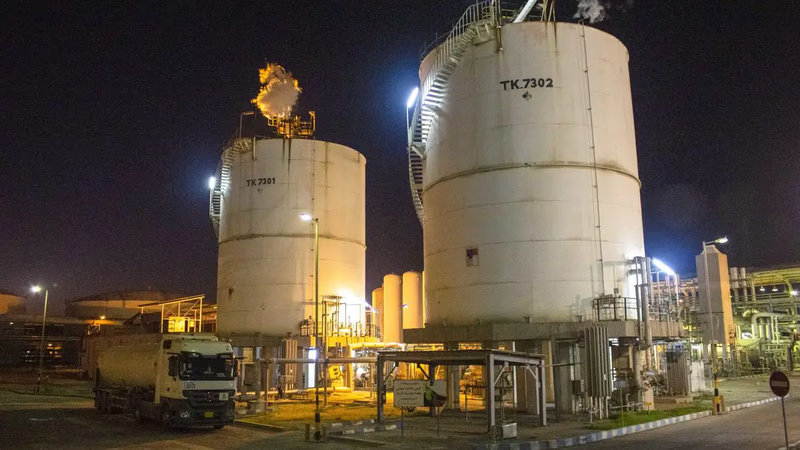
Nitrogen"s role in agriculture and industry is crucial. "
Nitrogen compounds were known in the Middle Ages. Alchemists knew nitric acid as the exhalation of water. The combination of nitric and hydrochloric acid, known as aqua regia, was known to melt gold. Nitrogen was discovered in 1772 by a chemist named Daniel Rutherford. He was confident that there was a part of the air that prevented combustion and chose the name "Noxious Air" for it. At the same time, of course, this element was studied by other scientists who called it "burnt air". Antoine Lavoisier, a prominent French chemist of the late 18th century, made significant contributions to the understanding of chemical elements, including nitrogen. Lavoisier played a crucial role in the Chemical Revolution, which marked a shift from the traditional phlogiston theory to the modern concept of elements and chemical reactions. He recognized nitrogen as one of the fundamental elements and conducted experiments to study its properties and reactions.
Lavoisier and his collaborator Pierre-Simon Laplace conducted experiments to analyze the composition of air. They demonstrated that air consists of a mixture of gases, primarily nitrogen and oxygen. Lavoisier referred to nitrogen as "azote" (derived from the Greek word "azotos," meaning lifeless) due to its inability to support combustion or sustain life. Over time, scientists conducted further investigations into nitrogen's chemical properties. They observed that nitrogen is relatively unreactive under normal conditions and does not readily combine with other elements. This characteristic stability is due to the strong triple bond between its two nitrogen atoms in the N2 molecule.
Nitrogen gas was likely encountered by ancient civilizations, although they did not recognize it as a distinct element. The air was believed to consist of a single substance, often referred to as "phlogiston" or "air," and it was not until later that the concept of individual elements emerged. In the 18th century, several chemists made significant contributions to the understanding of gases. In 1772, the Scottish chemist Joseph Black identified what he called "fixed air" (later known as carbon dioxide) as a distinct gas. Although the focus was on carbon dioxide, this discovery marked an important step toward recognizing different gases.
The name "nitrogen" was proposed by the French chemist Jean-Antoine Chaptal in 1790. The term originates from the Greek words "nitron" (saltpeter) and "genes" (forming), reflecting the element's association with nitric acid and nitrates. Throughout the 19th and 20th centuries, scientists further explored the properties and role of nitrogen. They discovered its presence in various compounds, its importance in biological systems, and its involvement in the nitrogen cycle, which affects the availability of nitrogen for living organisms. Nitrogen continues to find extensive applications in various fields. In addition to its role in fertilizers and industrial processes, it is used in cryogenics to create low-temperature environments, in the production of electronic components, and as an inert gas in controlled atmospheres for preserving food and preventing oxidation.
The neutrality (or inertness) of nitrogen gas led Antoine Lavoisier to choose the name "Azote", which means "lifeless" in Greek. This gas was the substance that suffocated the animals when inhaled, and it also extinguished the fire. The word nitrogen converted to the French word i.e. nitrogen and is still used instead of nitrogen in many languages. Medieval chemists performed several experiments with nitrogen compounds. For example, by combining nitric acid and hydrochloric acid, they obtained "Aqua Regia" which could dissolve gold. Also, in the early industrial and agricultural applications of carbon compounds, sodium nitrate or potassium nitrate was used as an explosive detonator and fertilizer .
The Scottish chemist Daniel Rutherford is often credited with the discovery of nitrogen. In 1772, he conducted experiments in which he burned a candle in a confined space until it extinguished, and the remaining gas did not support combustion or respiration. Rutherford called this gas "noxious air" and recognized it as distinct from other gases. The Swedish chemist Carl Wilhelm Scheele also isolated nitrogen independently in the same year. He heated various substances, including nitric acid and mercury oxide, and observed the formation of a gas that did not support combustion. Scheele referred to this gas as "fire air."
The understanding of nitrogen fixation, the conversion of atmospheric nitrogen into usable compounds, developed in the 19th century. In the early 20th century, the German chemist Fritz Haber developed a process known as the Haber-Bosch process, which allowed for the industrial synthesis of ammonia from atmospheric nitrogen and hydrogen. This process revolutionized agriculture by enabling the large-scale production of nitrogen-based fertilizers and played a significant role in increasing food production. The study of the nitrogen cycle, which describes the movement and transformations of nitrogen in the environment, has been a focus of scientific research. Scientists have investigated various processes, such as nitrogen fixation by specialized bacteria, nitrification (conversion of ammonia to nitrate), denitrification (conversion of nitrate to nitrogen gas), and biological assimilation of nitrogen by plants and animals. Understanding the nitrogen cycle is crucial for managing and mitigating the environmental impacts of human activities, such as excessive fertilizer use and nitrogen pollution in water bodies.



